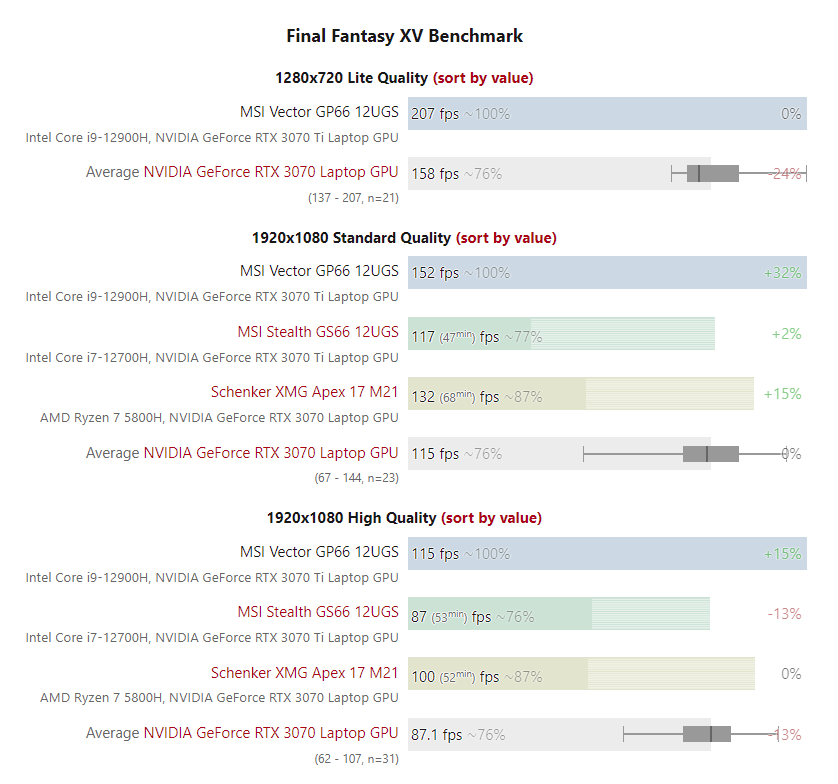This model can be applied to extreme cases as well where due to this TGP discrepancy, a technically better GPU model could still perform worse that one that is lower in the hierarchy. That’s exactly what happened with NVIDIA‘s Max-Q lineup not too long ago where certain Max-Q variants of a GPU would be faster than standard non-Max-Q SKUs causing confusion amongst the public. Max-Q was supposed to be lower-powered, more efficient alternatives to fully-fledged graphic cards so when they started to outperform some standard SKUs because of a higher TGP, that’s when things got out of hand and NVIDIA dropped the naming scheme.
It’s Max-Q all over again
However, it seems like the company was just fulfilling a formality as the Max-Q debacle is back again, just without a name to point at this time. NVIDIA has just launched laptops with its new RTX 3070 Ti GPU. Now, this GPU has more cores than the RTX 3070 mobile and a higher transistor count which means it should be faster than the RTX 3070 in all accounts. Unfortunately, that is not the case here. Notebookcheck did some testing with two different MSI laptops with the same RTX 3070 Ti laptop GPU. Those two being the MSI Vector GP66 and the MSI Stealth GS66 with the latter carrying a 150W TGP as compared to the former’s measly 105W TGP. Boost clocks also vary on these two variants with the 150W RTX 3070 Ti boosting up to 1485Mhz whereas 1035Mhz was the maximum boost clock for the 105W RTX 3070 Ti. That alone led to the MSI Stealth GS66 and its 105W RTX 3070 Ti to lose to its more power-consuming brother by about 15-17% in 3DMark benchmarks. In fact, the 105W RTX 3070 Ti is so power-limited that it loses to even some RTX 3070 laptops like the Schenker XMG Apex 17 that has a higher TGP. So, even though the GPU is a higher tier, it still loses to a lower-tiered SKU just because of the restricted TGP. This proves that TGP is singlehandedly the most crucial deciding factor for modern laptop GPUs these days. More so than the actual SKU name, you should focus on its TGP and if the laptop has a sufficient cooling system to sustain that and not thermal throttle. Notebookcheck’s testing also showed that the TGP discrepancy between the two RTX 3070 Ti variants led to ~15% higher FPS on the Schenker’s RTX 3070 as compared to the RTX 3070 Ti in the Stealth GS66, despite the latter being a “Ti” aka supposedly faster SKU. Before NVIDIA crowded the market with the Ti variants of their existing SKUs, this kind of confusion was kept at a minimum, at least. Now, with the RTX 3070 and 3070 Ti along with the RTX 3080 and 3080 Ti existing, there is an overlap which can potentially fool the customer into buying a product that’s actually slower, just because they went for “Ti” moniker. This is what originally prompted industry-wide calls for NVIDIA to make it necessary for laptop manufacturers to highlight the TGP of the GPUs so the customer knows what they’re buying and can make an informed decision according to that. That’s not to say that, for instance, a 105W RTX 3070 Ti is an underperformer because over 100W of power in a mobile form factor is still insane nonetheless. Therefore, it’s more important than ever to look at the GPU TGP of whatever laptop you’re buying to ensure you’re getting exactly what you need.

